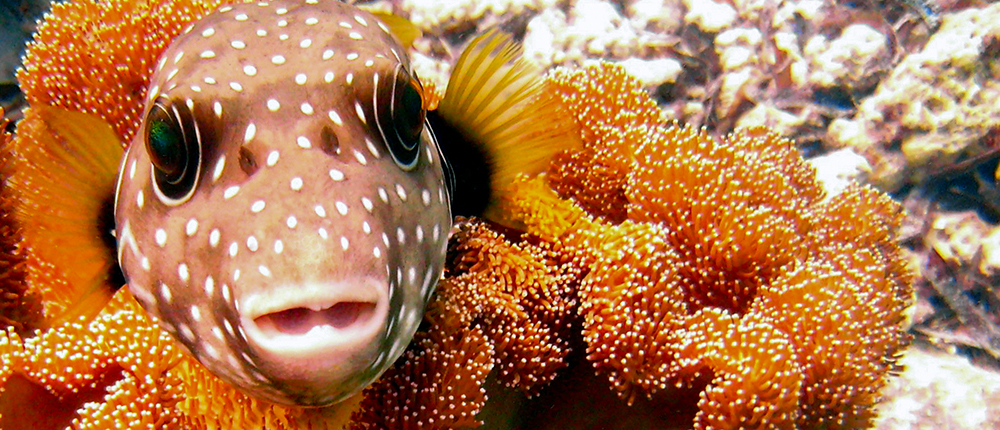Cute and Deadly: Learn about the Puffer Family
A toxic situation
Pufferfish are generally believed to be the second-most poisonous vertebrates in the world, after the golden poison frog. Certain internal organs such as the liver and sometimes their skin, contain tetrodotoxin, a poison that at the very least creates a foul taste, and is more often lethal. Tetrodotoxin is deadly to humans—more than 1,000 times as poisonous as cyanide. One pufferfish contains enough toxin to kill more than 30 people, and there is no known antidote. And yet, despite the lethal nature of the puffer, its meat is considered a delicacy in some parts of the world. Known as fugu in Japan, pufferfish meat is prepared by licensed chefs who are trained to carefully cut around the poisonous parts. But even one bad cut can spell almost certain death for those who partake of this toxic treat. In recent years, a new industry in farm-raised puffers has resulted in fish that have few or no toxic substances. This change is attributed to the understanding that puffers synthesize their toxins form bacteria found in their natural diets, but not in commercial fish food.

The blackspotted puffer is one of the more colorful varieties found in the waters of Wakatobi. It prefers coral-rich areas, where it can be found hovering in the vicinity of caves or crevices during the day, and resting in barrel sponges, or among soft corals at night. Photo by Paula Butler

On rare occasions one may encounter a blackspotted puffer that is completely gold, or even orange. This photo was captured on Wakatobi’s House Reef. Photo by Wayne MacWilliams
Plentiful puffers
Though certain species of pufferfish are vulnerable to water pollution, habitat loss and overfishing, most world-wide populations remain stable. These fish thrive in protected areas such as the reefs of Wakatobi. In fact, it’s almost a given that you will find pufferfish on almost every dive site at Wakatobi. Their big-eyed, puppy-like appearance make them interesting and evocative subjects for fish watchers and underwater photographers alike. Just don’t expect these fish to put on a performance of their signature talent for inflation, as this is actually a fairly rare occurrence during the puffer’s average day. Consider yourself lucky if you do witness this phenomenon, but don’t provoke their defense mechanism for your own amusement. Deliberate attempts to get a puffer to puff up is usually frowned upon; some say it causes undue stress to the fish, but a more compelling reason to abstain may be that repeated goading may cause the fish to start shying away from divers, depriving others of the chance to encounter this wonderful fish. So the next time you see a puffer on the reef, look, but give it a bit of space.
Isn’t it time to see more incredible marine life than you have ever dreamed possible! Contact us today at office@wakatobi.com or complete a quick trip inquiry at wakatobi.com. A guest experience representative will be in touch with you to answer your questions and provide information about your next dream dive vacation – to Wakatobi!


